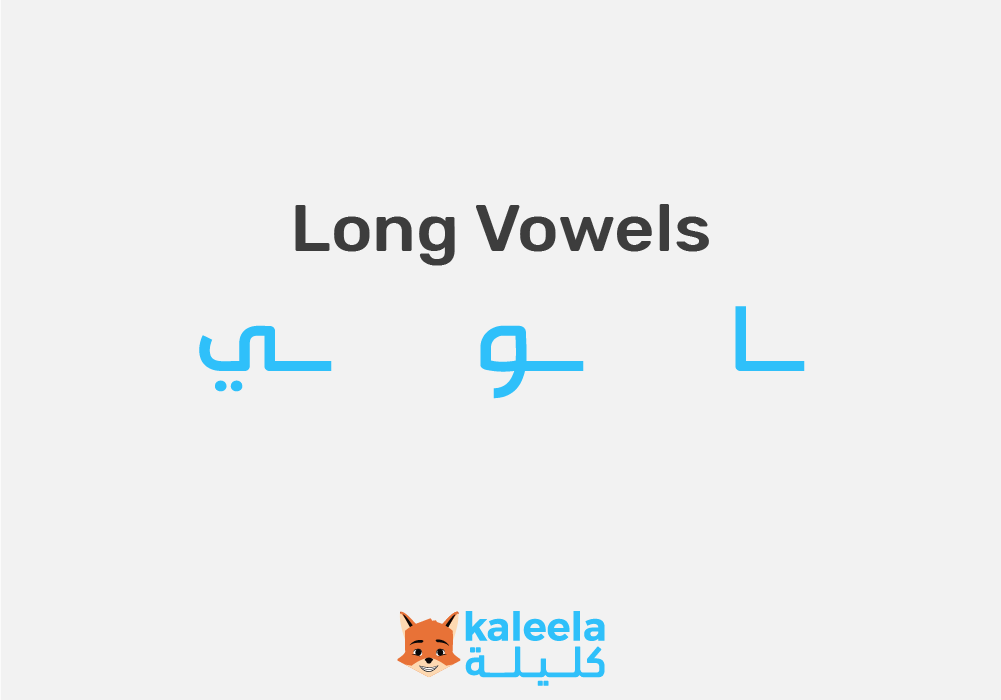☝️Arabic Level 1, Activity 03: “المُدُود/ Long Vowels” (Face-to-Face/Online)

Description:
In this activity, students will practice using the long vowels in a word. They will also practice how to write long vowels and how to read them as well.
Semantic Topics:
الحركات الطويلة، حروف المد، ا، ي، و، long vowels، المدود
Grammatical Structures:
long vowels، المدود، الحركات الطويلة
- Standard 1.1: Students engage in conversations or correspondence in Arabic to provide and obtain information, express feelings and emotions, and exchange opinions.
- Standard 1.2: Students understand and interpret spoken and written Arabic on a variety of topics.
- Standard 4.1: Students demonstrate an understanding of the nature of language through comparisons of Arabic and their own languages.
Idaho Content Standards for World Languages:
- COMM 1.1: Interact and negotiate meaning (spoken, signed, written conversation) to share information, reactions, feelings, and opinions.
- COMM 2.1: Understand, interpret, and analyze what is heard, read, or viewed on a variety of topics.
- COMP 1.1: Observe formal and informal forms of language.
- COMP 1.2: Identify patterns and explain discrepancies in the sounds and the writing system in the target language.
NCSSFL-ACTFL Can-Do Statements:
- I can use long vowels when speaking.
- I can differentiate between long vowels and short vowels.
- I can write and read long vowels in Arabic.
Materials Needed:
- Google Presentation
- Whiteboard/textbook for each student
- Marker/black pen
Warm-Up
- Greet students in Arabic السلام عليكم جميعاً، كيف حالكم اليوم؟ and then share your screen with students and pull up the presentation. And don’t forget to press present.
رحب بالطلاب واسألهم عن حالهم اليوم، شارك شاشتك معهم وافتح العرض. - Move to the next slide with the “Can-Do Statements” and read each Can-Do statement in English.
اقرأ شريحة “can-do statements” واقرأ كل واحدة بالانقلش. - Next, move to slide 3, which represents Wrap-up. Tell students that we are going to watch a short youtube clip together. When you click on the link, you will go automatically to minute 5:14, which is when it starts reviewing the long vowels. stop the video at minute 9:43, so students don’t feel bored.
ثم، اذهب لشريحة التسخين وشاهد الفيديو مع الطلاب ، ابدأ الفيدو من الدقيقة ٥:١٤ من بداية شرح المدود الطويلة، توقف عند الدقيقة ٩:٤٣.
Main Activity
- For the main activity, students will choose the right long vowel and put it in the right position in the word they have.
للنشاط الرئيسي، الطلاب سوف يختارون الاجابة الصحيحة لمكان حرف المد في الجملة . - The right answer will not appear until you click the mouse button.
الاجابة الصحيحة سوف تظهر بعد ضغطتك - Ask students to take their time thinking before they click the mouse.
اسأل الطلاب أن يأخذو وقتهم في التفكير قبل الاجابة، وقبل ضغطتك - Help students by asking the question, “What is the long vowel that comes after الضمة، الفتحة، الكسرة؟”لمساعدة الطلاب اسألهم اسئلة تقريبية، ماهو حرف المد الذي يأتي بعد الضمةو الفتحة ، الكسرة؟
- Repeat the same thing until the wrap-up slide.
اكمل باقي الشرائح حتى تصل لشريحة ١٤Wrap-Up
- You will ask students to write in their notebooks the following words in Arabic and then share them with the class. دجاج، حرير، حوت (pictures are provided in the presentation for each word).
سوف تسأل الطلاب أن يكتبو الكلمات التالية في دفترهم ( دجاج، حرير، حوت) تهجى كل كلمة ببطيء حتى يمكن للطلاب ان يكتبوها.
End of Activity
- You will ask students to write in their notebooks the following words in Arabic and then share them with the class. دجاج، حرير، حوت (pictures are provided in the presentation for each word).
- Read Can-Do statements once more and have students evaluate
their confidence.
(Use thumbs up/thumbs down or download our student cards.) - Encourage students to be honest in their self-evaluation.
- Pay attention, and try to use feedback for future activities!
NCSSFL-ACTFL Can-Do Statements:
- I can use long vowels when speaking.
- I can differentiate between long vowels and short vowels.
- I can write and read long vowels in Arabic.

